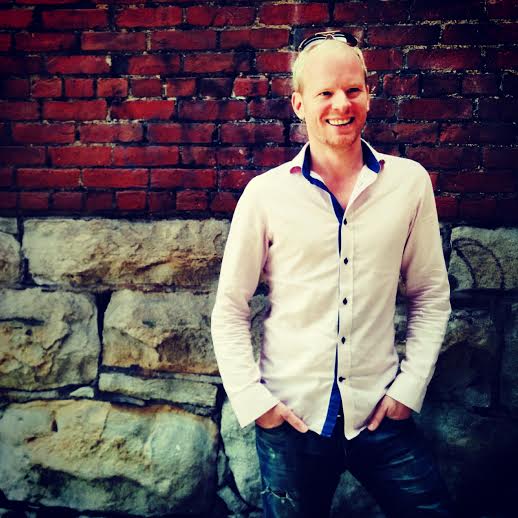This morning, Unbounce announced the return of its Call To Action Conference, which will take place this September 13th-15th on Vancouver’s Granville Island. An expansion of last year’s successful event, this year will feature double the number of speakers, an extra day of content, and follow-up events in Toronto, New York, Chicago, and Boston.
The expansion speaks to the rapid development of digital and inbound marketing over the past few years. BetaKit sat down with Unbounce co-founder Oli Gardner about what has changed in that time, and what startup marketers need to focus on now.
5 years ago the Landing Page was an alien concept to many marketers. What have been the biggest changes in thinking about inbound marketing over this time?
Inbound marketing has – thankfully – put an emphasis on the need for different treatments for different inbound channels (email, social, PPC, organic, etc). Each channel has a different level and style of context established prior to the click: a conversational email, a 118 character tweet, a banner ad. They are beginning a story in a different manner.
Correspondingly, the landing experience of each needs to be different. This need has been demonstrated by the growth in landing page tools.
Unfortunately, the majority of the marketing world is still making too many mistakes when it comes to campaign execution.
I look at approximately 1,000 landing pages every week (in part to keep my tagline of having seen more landing pages than anyone on the planet alive :). I see positive trends and I see flat lines.
The SaaS community and a few verticals such as education are far ahead of the rest of the marketing world when it comes to delivering delightful landing experiences. I think this (as far as SaaS is concerned) has to do with the agility of modern web businesses to respond to progress in their community.

What are consistently the 3 biggest mistakes you still see inbound marketers getting wrong with their campaigns?
That’s an easy one. Poor attention ratio, no context between ad and landing page, and a lack of clarity.
Landing pages represent a transition from sending campaign traffic to your homepage, to sending it to an experience (landing page) designed specifically for that campaign. However, there is a fear and reluctance to stop being everything to everybody. It’s the curse of the committee. I was speaking to some marketers at a higher education conference I was speaking at in January. They loved my talk, they got it, and they wanted to implement the changes (using landing pages for their campaigns instead of their homepage/website). But they said they’d get fired if they went ahead and did that. WTF!
Really, the biggest mistake is management not empowering their employees to follow the advice they learn when they attended a conference that management paid for.
I digress.
“I look at 1,000 landing pages every week. I see positive trends and I see flat lines.”
Attention Ratio is the ratio of things you can do on a given page, to the number of things you should be doing – which in a marketing campaign is always one. When you lower Attention Ratio, you increase conversions.
The second part is context. As marketers we should respect the click that our potential customers are making, and speak to them with an experience that speaks to the context that existed prior to the click. It sounds simple, but it’s not happening often enough. It starts with matching the headline of your page with the link that was clicked to get there (this lets people know they are in the right place). More than that though, you need to write with a conversational tone that matches how you began the conversation.
Clarity is probably the biggest conversion killer of all. If we are making people do work to figure out what we’re peddling, we’ve failed.
There’s a simple test I call the bs detector. Print out your landing page, and do a quick scan of the headlines/subheads and read them out loud while walking in a circle.
What you’re doing here is behaving like an impatient web visitor who is also distracted by other noise, or thoughts, or being on their phone. When you verbalize the scannable portions of the page you’ll quickly start to hear where things don’t make sense. Better yet, do this in front of someone, then ask them what your page is about, and what they’ll get from taking action. If they don’t know, you have a clarity problem.
What’s the biggest trend marketers need to get on top of right now, not tomorrow?
I think of it more in terms of which trends you shouldn’t get on top of. The fact that we’re in a new year, doesn’t mean we need a new trend.
My single biggest piece of advice for any marketer, entrepreneur or new business would be simple: learn how to write. Focus on copywriting.
It’s 10x more important for you to nail your elevator pitch, in all its different guises and executions – homepage headline, email p.s. lines, landing page headlines and calls to action – than it is to worry about adding parallax to your landing pages.
Every full-width background image you slap on your page adds hundreds of precious conversion kilobytes to the experience.
“Learn how to write. Focus on copywriting.”
10 years ago, we used to obsess over making sure a web page was under 100k. Now that we’re so spoiled with fast connections, we’ve become incredibly lazy and complicit in creating bloated experiences.
There’s a large segment of the non-first mobile world that has to work three hours just to be able to pay for one hour’s worth of bandwidth. Our new design trends are not helping them become customers.
As data-informed marketers, we shouldn’t be looking to win awards and shouldn’t be following trends. Every trend needs time to settle and for “digital natural selection” to come along and slap it around a little. We have UX principles and best practices that have evolved over 20 years. When it comes to conversion rate optimization in marketing, best practices (why are you practicing?) are infantile by comparison, so my advice is to focus on communication.
Other than Landing Pages, what are the top three other tools an inbound marketer needs in their toolkit?
You must be optimizing every landing experience, whether it’s a campaign specific landing page, or any page on your website.
I get asked all the time about Unbounce and Optimizely being competitors (because we both facilitate A/B testing). The funny part is we’re not. You need Optimizely (or VWO) to optimize existing pages on your website. You need Unbounce to build, publish and A/B test new landing pages for your campaigns. The truth is you need both. #youneedboth
Other tools I like. Usabilityhub.com is great. They have a five second test that lets you test the clarity of your pages by putting them in front of 20 people for – you guessed it – five seconds. If they can’t accurately answer a question such as “What is this page about?”, “What do you think will happen when you click the button?”, then you have a clarity problem. Add, rinse, repeat until the problem goes away.


